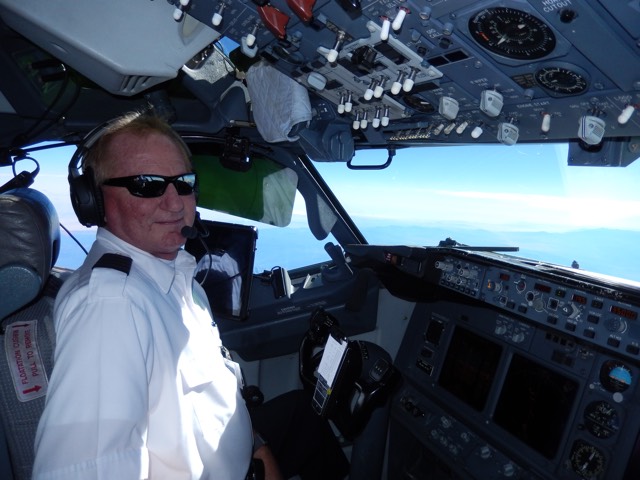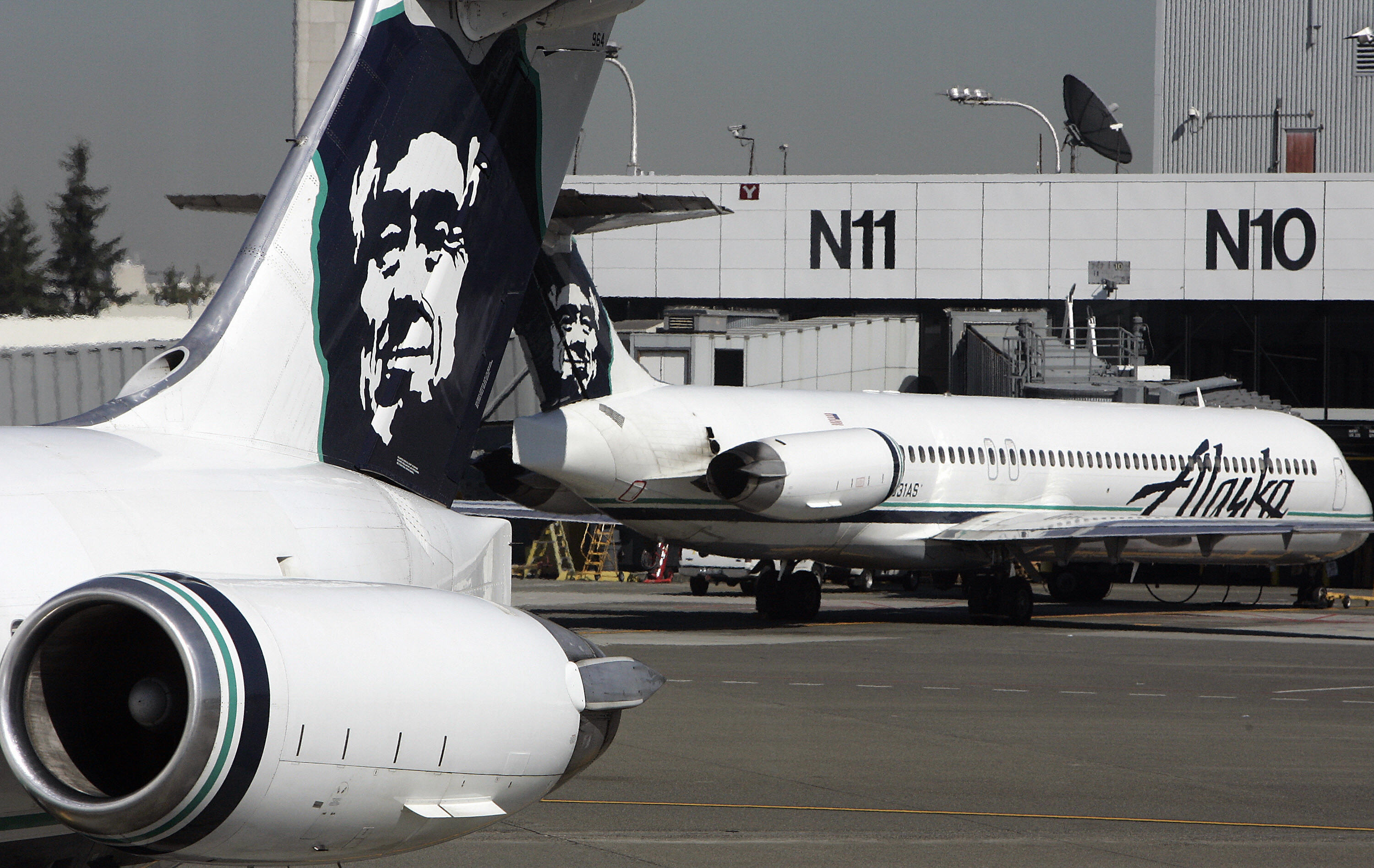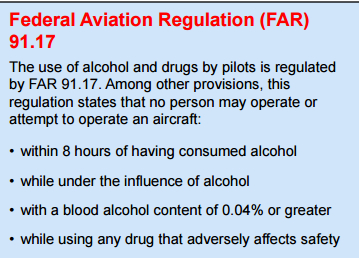
David Arntson, a former Alaska Airlines pilot, has been arrested on federal charges accusing him of flying a passenger plane while drunk. (Google+)
A now-retired Alaska Airlines pilot has been arrested on federal charges accusing him of flying a passenger plane while drunk.
David Hans Arntson, 60, was charged in the Central District of California with operating a common carrier while under the influence of alcohol or drugs, prosecutors said.
“Those in command of passenger jets, or any other form of public transportation, have an obligation to serve the public in the safest and most responsible way possible,” U.S. Attorney Eileen M. Decker said in a statement. “We cannot and will not tolerate those who violate the trust of their passengers by endangering lives.”
Arnston and a federal public defender representing him could not be reached for comment.
Here’s what you need to know:
1. Arntson Had a Blood Alcohol Content Well Over the Legal Limit After Piloting 2 Flights

(Getty)
Arntson was randomly tested after piloting two Alaska Airlines flights on June 20, 2014, according to court documents. The incident and charges were not made public until Thursday, January 21, 2015, when Arntson appeared in court for the first time.
He was the pilot on flights from, Flight 573 from San Diego International Airport to Portland, Oregon, and Flight 580 from Portland to John Wayne Airport in Orange County, prosecutors said.
After landing at John Wayne, an Alaska Airlines technician performed two breathalyzer tests on Arntson. The first test had a blood alcohol concentration of 0.134 percent and the second was 0.142 percent, prosecutors said.
Arntson was then pulled from work.
Federal law says that a person operating a “common carrier,” like a commercial airliner, is under the influence of alcohol if the blood alcohol content is 0.10 percent or higher, according to a press release from the Central District of California.
2. He Told His Co-Pilot ‘I Bet It’s for Me’ When He Saw the Drug Tester
Arntson told the co-pilot on the two flights that “I bet it’s for me” when he saw the drug tester at John Wayne Airport, according to court documents, which you can read above or by clicking here.
He had flown with Arntson on both the flight from San Diego to Portland and the flight from Portland to John Wayne.
Arntson’s co-pilot said he might have left the cockpit during the flight to stretch his legs, but wasn’t sure. He also wasn’t sure if Arntson had any beverage during the flight, according to court documents. Crew members didn’t see him drinking alcohol and didn’t smell it on his breath, prosecutors said.
Arntson, who was interviewed in October 2015, denied drinking alcohol, according to court documents. He told the technician he had recently been in the hospital and had been taking antibiotics, investigators said. Arnston said he was hospitalized after he had a nose bleed on a June 5, 2014, flight.
He told investigators the technician did not tell him he had tested positive for alcohol. The technician said in his report that he instructed Arntson he could not conduct “safety-sensitive duties” or drive a vehicle.
Arnston said he learned about the positive test from Alaska Airline’s chief pilot. He then tried to have his blood tested at “several urgent care facilities,” but was told he would need a prescription to have that done. He had his blood tested the next morning, and the result was negative, according to court documents.
Investigators said he wasn’t taking any medication that could have influenced the initial tests.
Arnston told investigators he had ordered a beer the night before his flight, but had only taken sips of it. He said he was a “social drinker” and never had an alcohol or drug problem.
3. He Retired From Alaska Airlines After the Incident

An Alaska Airlines jet. (Getty)
Arnston was removed from “all safety-sensitive duties” after Alaska Airlines was notified of the test results.
He then retired from the airline. His pilot’s license expired in 2014.
“Alaska Airlines has an uncompromising commitment to safety and compliance and we put the safety of our passengers and our employees above all else,” Alaska Airlines said in a statement. “We have a zero tolerance policy for employees, including pilots, who fail alcohol and drug tests. Mr. Arntson was immediately removed from duty, he never flew for Alaska after June 20 and he left the company soon after. We believe he is deserving of the Department of Justice’s actions.”
Arnston had never previously failed an alcohol or drug test in his 31 years as a pilot, first with Jet America and then with Alaska Airlines after it purchased Jet America, KGW reports.
He was promoted to captain in 1987.
4. He Faces Up to 15 Years in Prison if Convicted

(Getty)
Arntson faces a maximum sentence of 15 years in prison if convicted, the U.S. Attorney’s office says. Operating a common carrier while under the influence of alcohol or drugs is a felony charge.
He was released after posting $25,000 bail and is scheduled for his next court appearance on February 10 in Los Angeles. Arnston is not allowed to use alcohol as part of the conditions of his release, and must submit to alcohol testing no more than three times per month while on supervised release.
The case was investigated by the U.S. Department of Transportation’s Office of Inspector General.
5. FAA Guidelines Call for ‘8 Hours From Bottle to Throttle’

(FAA)
The Federal Aviation Administration guidelines call for “eight hours from bottle to throttle,” meaning pilots should not drink alcohol in the eight hours before a flight. It encourages pilots to not drink in the 24 hours before flying.
“Consider the effects of a hangover. Eight hours from ‘bottle to throttle’ does not mean you are in the best physical condition to fly, or that your blood alcohol concentration is below the legal limits,” the FAA says.
Flying, while fun and exciting, is a precise, demanding, and unforgiving endeavor. Any factor that impairs the pilot’s ability to perform the required
tasks during the operation of an aircraft is an invitation for disaster,” according to the FAA> The use of alcohol is a significant self-imposed stress factor that should be eliminated from the cockpit. The ability to do so is strictly within the pilot’s control.”



